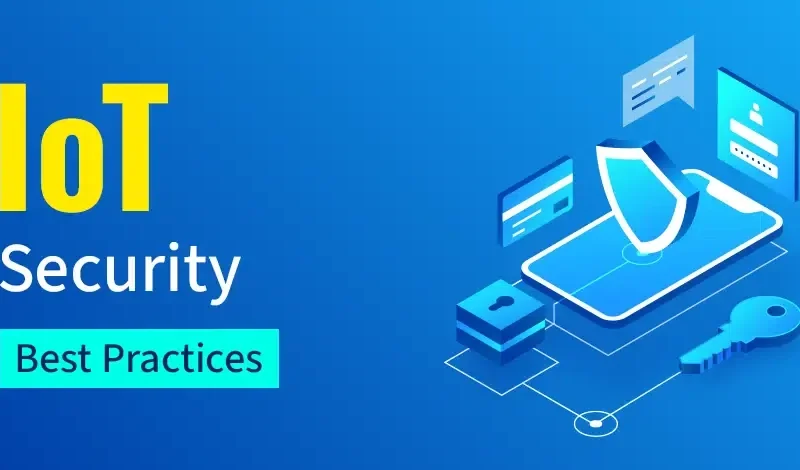The Internet of Things (IoT) is revolutionizing the way we interact with technology, connecting billions of devices and enabling smarter, more efficient systems. However, with this growth comes significant security challenges. Ensuring robust IoT security is crucial to protect sensitive data, maintain user privacy, and prevent malicious activities. In this article, we will explore various aspects of IoT security, highlighting the importance of integrating IoT security solutions with existing infrastructures.
Understanding IoT Security
The IoT ecosystem comprises a vast network of interconnected devices, including sensors, smart appliances, wearable technology, and industrial systems. Each of these devices can collect, process, and transmit data, often operating autonomously. Given this complexity, IoT security encompasses a range of practices designed to protect these devices and their data from unauthorized access and cyber threats.
Key Challenges in IoT Security
Device Vulnerabilities
IoT devices are often built with limited processing power and memory, which can restrict their ability to implement robust security measures. Many devices lack the necessary hardware for encryption or advanced authentication, making them easy targets for attackers.
Network Security
The sheer volume of connected devices in an IoT network increases the attack surface, providing numerous entry points for potential breaches. Securing the network requires comprehensive monitoring and threat detection capabilities to identify and mitigate vulnerabilities in real-time.
Data Privacy
IoT devices collect vast amounts of data, often including sensitive personal information. Ensuring the privacy and security of this data is paramount, requiring encryption and secure storage solutions to prevent unauthorized access and data breaches.
Best Practices for IoT Security
Implement Strong Authentication
Using strong, unique credentials for each IoT device is essential to prevent unauthorized access. Multi-factor authentication (MFA) adds an additional layer of security, making it harder for attackers to gain control of devices.
Encrypt Data Transmission
Encrypting data both in transit and at rest is critical to protect sensitive information from being intercepted or accessed by unauthorized parties. This includes using secure communication protocols such as TLS/SSL.
Regular Software Updates
Keeping device firmware and software up to date is vital to address known vulnerabilities and improve security features. Manufacturers should provide regular updates and users should promptly apply them to their devices.
Network Segmentation
Segmenting the IoT network from other critical systems can limit the impact of a potential breach. This involves creating separate network zones for IoT devices and enforcing strict access controls between them.
Integrating IoT Security Solutions
A comprehensive IoT security strategy should integrate seamlessly with existing security infrastructures to enhance overall protection. This approach ensures that organizations can leverage their current investments in security technologies while addressing the unique challenges posed by IoT devices.
“IoT security solutions should seamlessly integrate with existing security infrastructures to enhance overall protection without requiring extensive modifications or replacements,” states Sai Blackbyrn, CEO of Coach Foundation. This highlights the importance of choosing solutions that are compatible with current systems, minimizing disruption and maximizing security effectiveness.
Unified Threat Management (UTM)
UTM solutions provide a consolidated approach to security, combining multiple security functions such as firewalls, intrusion detection, and anti-malware into a single platform. Integrating UTM with IoT security can simplify management and provide comprehensive protection.
Security Information and Event Management (SIEM)
SIEM systems collect and analyze security data from across the network, providing real-time visibility and threat detection. Integrating IoT security data into a SIEM system allows for more effective monitoring and quicker response to incidents.
Continuous monitoring and regular maintenance are important for ensuring the security and functionality of IoT devices. “Implementing systems like endpoint detection and response (EDR) software helps in monitoring device activity and identifying anomalies that may indicate security breaches,” states Vikas Kaushik, CEO at Techahead Regular firmware updates and vulnerability scanning are necessary to address new threats and fortify the security measures in place. Additionally, IoT device monitoring should include real-time data collection and performance analysis to maintain optimal operation and security standards.
Future Trends in IoT Security
Artificial Intelligence and Machine Learning
AI and machine learning are playing an increasingly significant role in enhancing IoT security. These technologies can analyze vast amounts of data to identify patterns and detect anomalies, providing advanced threat detection and response capabilities.
Blockchain Technology
Blockchain offers a decentralized approach to securing IoT devices and data. By creating an immutable ledger of transactions, blockchain can ensure the integrity and authenticity of data, making it harder for attackers to tamper with information.
Edge Computing
Edge computing processes data closer to where it is generated, reducing latency and improving security. By handling data locally, edge computing minimizes the risk of data being intercepted during transmission and allows for quicker detection of threats.
Conclusion
IoT security is a critical aspect of the rapidly expanding IoT landscape. Addressing the unique challenges posed by IoT devices requires a comprehensive approach that includes strong authentication, data encryption, regular updates, and network segmentation. Integrating IoT security solutions with existing infrastructures enhances overall protection without requiring extensive modifications, as emphasized by Sai Blackburn. As technology evolves, embracing trends such as AI, blockchain, and edge computing will further strengthen IoT security, ensuring a safer and more resilient IoT ecosystem.
The post IoT Security appeared first on Datafloq.
Source link
lol

